This blog post introduces pig housing design, focusing on factors like ventilation, temperature control, flooring, space requirements, feeding, watering, waste management, lighting, noise reduction, biosecurity, accessibility, and ease of handling. It also addresses frequently asked questions and offers tips for creating a successful pig housing design, ensuring the welfare and productivity of these intelligent, social, and curious animals.
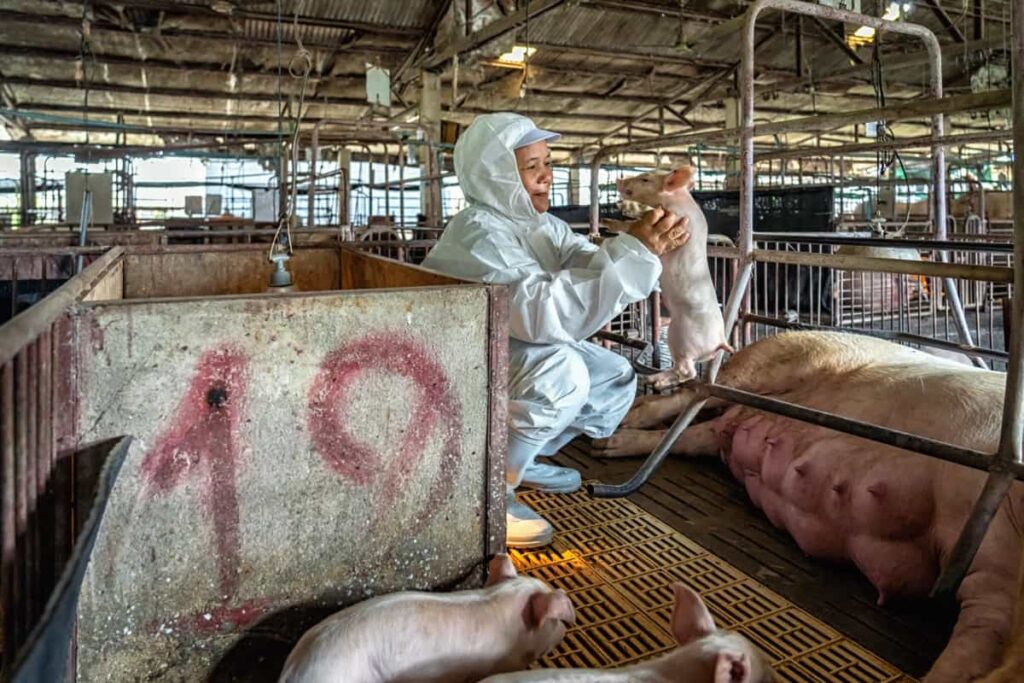
Pig Housing Design
Pig housing design is the process of planning and constructing the physical environment where pigs live. It involves choosing the pig housing system’s location, size, shape, layout, materials, and equipment.
- Provide a comfortable and healthy environment for pigs that meet their behavioral and physiological needs
- Maximize the productivity and profitability of pig farming by optimizing the use of resources and minimizing the risks of diseases and injuries
- Comply with the animal welfare standards and regulations that apply to your region and market
- Minimize the environmental impact of pig farming by reducing the emissions of greenhouse gases, odors, dust, and noise.
Factors to Consider in Pig Housing Design
- Purpose and Scale of Operation
- Meat Production: Adequate space for growth, efficient feeding and watering systems, and facilities for easy handling during transportation and slaughter.
- Breeding: Separate spaces for gestation, farrowing, and nursery, with attention to sow comfort and piglet welfare.
- Pets: Focus on comfort, safety, and socialization areas.
- Climate and Weather Conditions
- Insulation and ventilation: Adjustments for temperature extremes, humidity control, and protection from adverse weather conditions.
- Drainage: Design flooring and drainage systems to prevent waterlogging during heavy rainfall.
- Breed and Age of Pigs
- Size and weight considerations for space requirements.
- Tailored facilities for specific needs, such as farrowing crates for sows.
- Market and Consumer Demands
- Quality standards: Ensure your housing system meets or exceeds industry and consumer expectations.
- Certification: Design facilities that comply with relevant certifications or labels, addressing organic or free-range production concerns.
In case you missed it: Pig Farming in Thailand: Breeds, License, and Permissions to Start
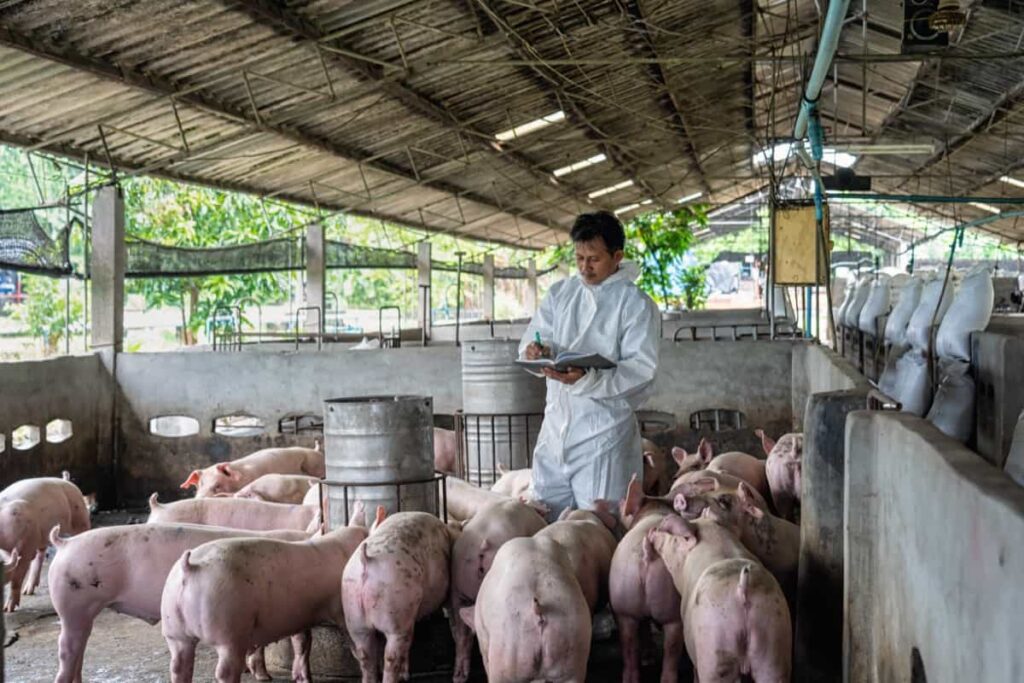
- Availability and Cost of Materials and Equipment
- Cost-effectiveness: Consider long-term maintenance costs and durability.
- Energy efficiency: Optimize heating, ventilation, and lighting systems for energy savings.
- Sustainable materials: Consider eco-friendly options where possible
Understanding Pig Behavior and Physiology
One of the most important factors to consider in pig housing design is the behavior and physiology of pigs. Pigs have evolved as social animals living in groups with complex hierarchies. They have a strong sense of curiosity and exploration.
- Social interaction: Pigs need to interact with other pigs to establish social bonds, communicate information, express emotions, and perform natural behaviors such as grooming, playing, and fighting.
- Space: Pigs need enough space to move around freely, exercise their muscles, explore their environment, and avoid overcrowding stress.
- Comfort: Pigs need a comfortable environment that provides adequate shelter from extreme weather conditions, protection from predators and pests, insulation from heat or cold, cushioning from hard surfaces, cleanliness from dirt and pathogens, and stimulation from enrichment items.
- Food: Pigs need a balanced diet that meets their nutritional requirements for growth, reproduction, and health. They also need access to clean water at all times.
- Health: Pigs need a healthy environment that prevents or minimizes the occurrence of diseases, injuries, and parasites. They also need regular veterinary care and treatment when necessary.
Types of Pig Housing Systems
There are two main types of pig housing systems: indoor and outdoor. Indoor housing systems are enclosed structures providing shelter and controlling environmental conditions. Outdoor housing systems are open-air structures that allow pigs access to natural resources and vegetation. Both types of housing systems have advantages and disadvantages depending on each pig farm’s specific situation and objectives.
Indoor Housing Design for Pigs
Indoor housing design for pigs involves creating a suitable indoor environment that meets the needs and preferences of pigs while maximizing the efficiency and profitability of pig production.
- Choosing the appropriate type and size of building (e.g., barns, sheds, tents, etc.)
- Dividing the indoor space into functional areas (e.g., resting area, feeding area, dunging area, etc.)
- Selecting the appropriate type and layout of pens or stalls (e.g., individual or group housing, solid or slatted floors, etc.)
- Installing the necessary equipment and facilities (e.g., feeders, drinkers, ventilation systems,
- temperature control systems, flooring options, waste management systems, lighting systems,
- noise reduction systems, biosecurity measures, accessibility features, etc.)
In case you missed it: 20 Best Pork Producing Companies in the United States: Top List for Hog and Pig Meat in the USA
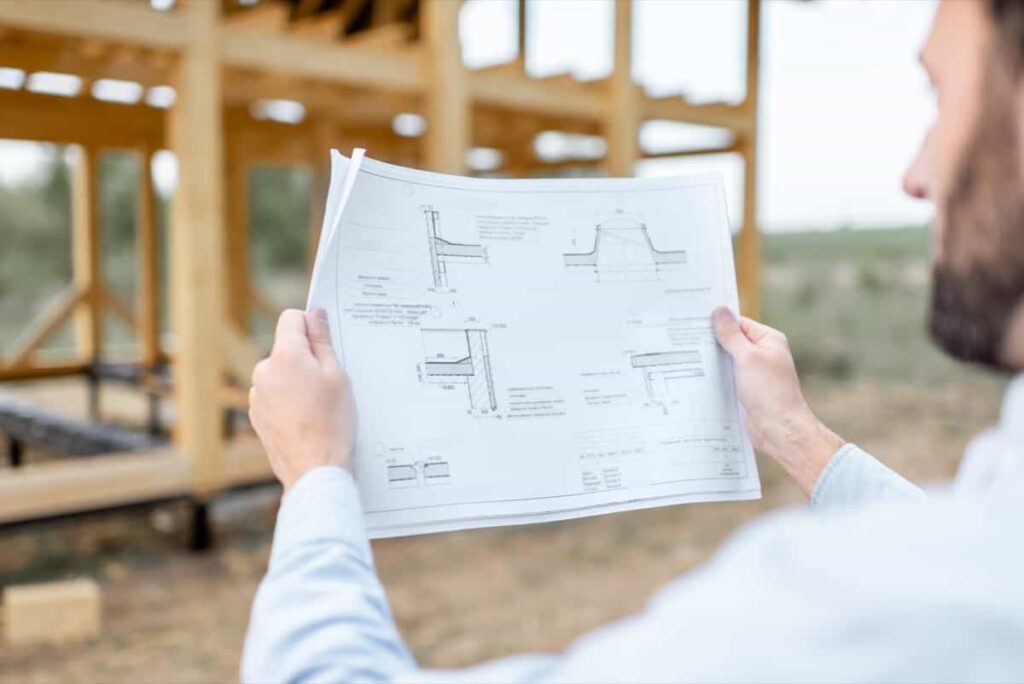
Outdoor Housing Design for Pigs
Outdoor housing design for pigs involves creating a suitable outdoor environment that allows pigs to express their natural behavior while minimizing the environmental impact and ensuring animal welfare.
- Choosing the appropriate location and size of land (e.g., pasture, woodland, crop residues,
- etc.)
- Providing adequate shelter from weather extremes (e.g., huts, shades, windbreaks, etc.)
- Providing adequate fencing or boundaries to prevent escape or intrusion (e.g., electric fences, barbed wires, hedges, etc.)
- Providing adequate feed and water sources compatible with the natural vegetation (e.g., troughs, nipples, sprinklers, etc.)
- Providing adequate enrichment materials that stimulate exploration and manipulation (e.g., straw bales, branches, etc.)
- Providing adequate health care and disease prevention measures (e.g., vaccination, parasite control, etc.)
Ventilation and Air Quality in Pig Housing
Ventilation exchanges indoor air with outdoor air to maintain suitable air quality in pig housing. Air quality is affected by several factors, such as temperature, humidity, dust, gases, odors, and pathogens.
Poor air quality can negatively impact pig performance and cause respiratory problems, eye discomfort, and stress. Consequently, it’s critical to create a ventilation system that distributes and exchanges air properly, removes extra heat and moisture, and lowers the amount of dangerous materials and microbes in pig housing.
Ventilation systems fall into two categories: natural and mechanical. Naturally occurring ventilation systems generate air movement due to natural forces such as thermal buoyancy and wind. Mechanical ventilation systems employ fans and ducts to facilitate and control air movement inside a given space.
Temperature Control in Pig Housing
Temperature control is maintaining a suitable thermal environment in pig housing. Numerous elements, including air temperature, radiant temperature, air velocity, and humidity, influence the thermal environment. Pigs’ body temperature is influenced by their thermal surroundings, which impacts their welfare, productivity, and general health. Pigs cannot control their body temperature through behavioral and physiological means.
In case you missed it: Month-wise Pig Farm Maintenance: Effective Operation for Better Profits
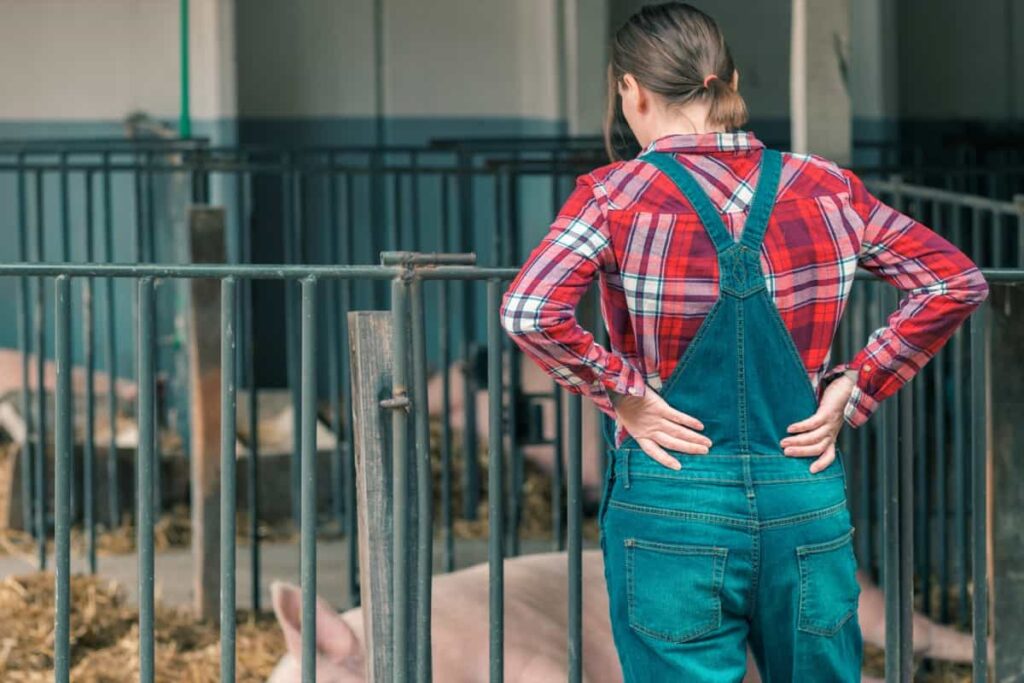
Thus, creating a temperature management system that can give pigs a comfortable range of temperatures, shield them from extreme heat or cold, and lessen the energy use and environmental effects of pig housing is critical. Temperature control systems can be classified into two types: passive and active. Passive temperature control systems modify the thermal environment by using natural resources such as solar radiation, wind, and vegetation. Active temperature control systems modify the thermal environment by using artificial devices such as heaters, coolers, and humidifiers.
Flooring Options for Pig Housing
Flooring is the surface that covers the floor of pig housing. Flooring affects many aspects of pig production, such as animal welfare, hygiene, comfort, behavior, health, and performance. Therefore, it is important to choose a flooring option suitable for each pig farm’s specific conditions and objectives.
Flooring options can be classified into two types: solid and slatted. Solid flooring is a continuous surface that covers the entire floor area. Slatted flooring is a surface with gaps or openings that allow the passage of manure and urine. Solid flooring can be made of concrete, wood, rubber, or plastic. Slatted flooring can be made of metal, plastic, or wood.
Space Requirements for Pigs in Housing Design
Space is the floor area available for each pig in the housing design. Space affects many aspects of pig production, such as animal welfare, behavior, health, and performance. Therefore, it is important to provide adequate space for pigs in a housing design that allows them to express their natural behavior, avoid overcrowding, and reduce aggression and stress.
Space requirements for pigs vary depending on several factors, such as the type and category of pigs, the type and layout of housing, the environmental conditions, and the legal and ethical standards. space requirements for pigs can be expressed in terms of floor area per pig, floor area per unit of body weight, or stocking density.
Feeding and Watering Systems in Pig Housing
Feeding and watering systems are the equipment and facilities that provide feed and water to pigs in housing design. Feed and water are essential for pigs’ survival, growth, reproduction, and health. Therefore, it is important to design feeding and watering systems that provide sufficient quantity and quality feed and water to pigs, meet their nutritional requirements, prevent wastage and contamination, and facilitate management and monitoring.
Feeding and watering systems can be classified into manual and automatic. Manual feeding and watering systems require human intervention to feed and water to pigs. Automatic feeding and watering systems use devices such as feeders, drinkers, pipes, valves, sensors, controllers, etc., to supply feed and water to pigs without human intervention.
Waste Management in Pig Housing
Waste management is collecting, storing, treating, and disposing of waste generated by pigs in housing design. Waste includes manure, urine, bedding material, feed residues, water runoff, etc. Waste management affects many aspects of pig production, such as animal welfare, hygiene, health, environmental impact, profitability, etc. Therefore, it is important to design a waste management system that can reduce the amount and impact of waste generated by pigs, prevent pollution and odor problems, comply with legal and ethical standards, and utilize waste as a valuable resource.
In case you missed it: Pig Farming Project Report: Investment, Profit for 10, 20, 50, 100, and 500 Pigs/Hogs
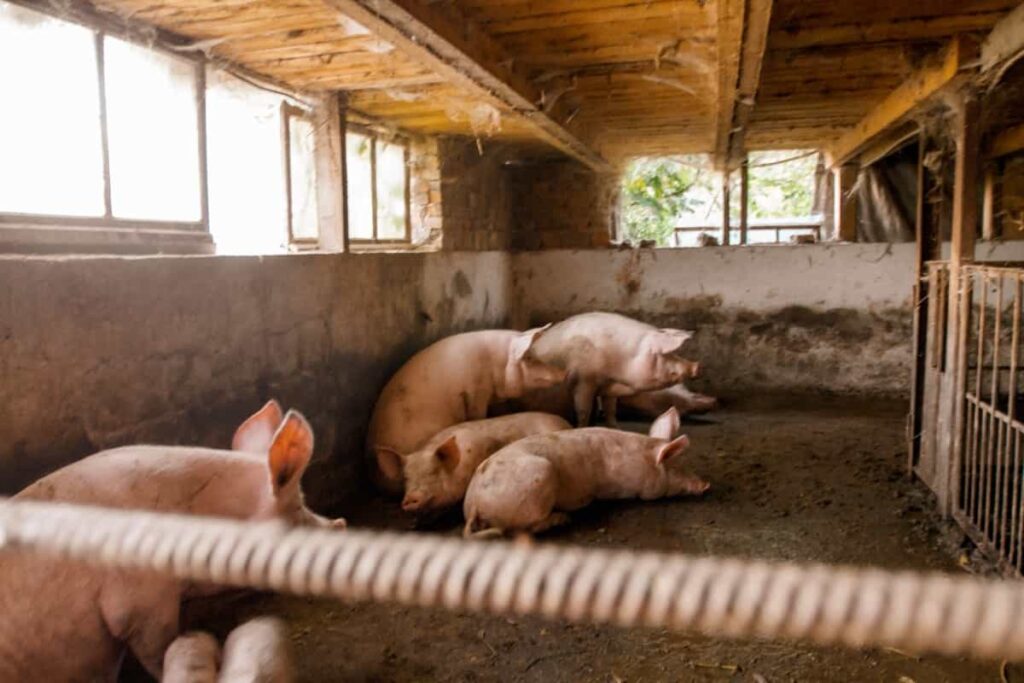
Lighting Considerations in Pig Housing Design
Lighting is a crucial element that goes beyond just brightening up the space. Proper lighting plays a vital role in promoting the well-being and productivity of pigs. Pigs, like humans, have daily rhythms affected by light, influencing their behavior and growth. Adequate, well-distributed lighting helps regulate their circadian rhythms, reducing stress and enhancing overall health.
Natural light is preferred, when possible, but artificial lighting can be strategically used to supplement or extend daylight hours. Additionally, providing a gradual transition between light and dark periods is essential for the comfort of these intelligent animals, contributing to a harmonious and stress-free living environment.
Noise Reduction in Pig Housing
Reducing noise in pig housing is vital for the well-being and productivity of our porcine friends. Pigs have sensitive ears, and excessive noise can cause stress and affect their health. Consider using sound-absorbing materials like rubber mats or straw bedding to create a calm environment.
Maintain a consistent daily routine to help pigs feel secure and accustomed to their surroundings. Providing quiet resting areas and avoiding sudden loud noises during feeding or handling times can significantly reduce stress levels. Minimizing noise creates a more peaceful atmosphere, promoting contented pigs and a healthier, more productive living space.
Biosecurity Measures in Pig Housing Design
Biosecurity is vital to prevent diseases. Start by having a designated entrance to the farm with proper disinfection facilities. Ensure workers wear farm-specific clothing and boots to avoid external contaminants. Implement controlled access zones to limit movement between different areas, reducing the risk of disease spread. Regularly sanitize equipment and vehicles entering the farm. Quarantine new pigs before introducing them to the herd. These measures create a protective shield, safeguarding pig health and the overall well-being of your farm.
Accessibility and Ease of Handling in Pig Housing
Prioritize accessibility for efficient handling. Ensure wide, clear pathways for easy movement and reduce stress during transportation. Implement well-designed gating systems to guide pigs smoothly. Create spaces that allow caregivers easy access to health checks and treatments. This ensures a stress-free environment, fostering positive human-animal interactions. Properly designed housing facilitates efficient handling practices, contributing to the overall health and welfare of the pigs while optimizing the workflow for caretakers.
Frequently Asked Questions on Pig Housing Design
How Much Space Do Pigs Need in A Housing Design?
Pigs thrive in environments that provide at least 8-10 square feet per pig, depending on their size. This recommendation ensures physical comfort and allows for the expression of natural behaviors.
In case you missed it: How to Make Silage for Livestock: Business Plan, Preparation Process for Goats, Sheep, Pigs, and Cows
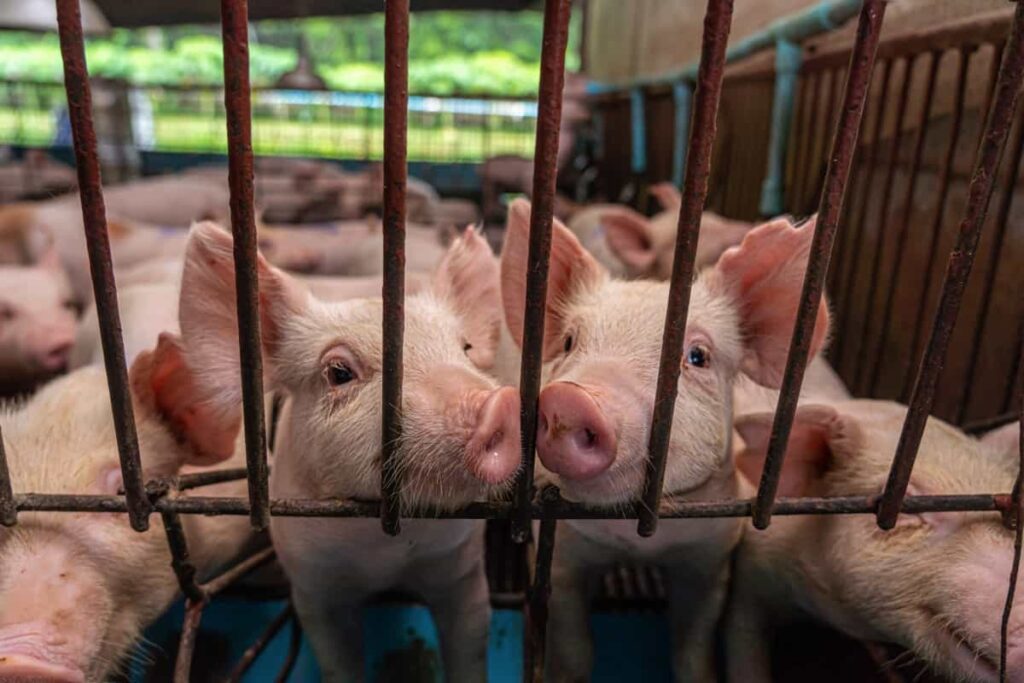
What’s the Ideal Diet for Pigs, And How Often Should They Be Fed?
Pigs require a balanced diet with grains, proteins, and vitamins. Feed them twice daily, adjusting portion sizes based on age and weight.
Conclusion
Pig housing design is a complex journey beyond just creating spaces; it involves creating environments resembling happy pigs’ contented grunts. It balances the needs of the inhabitants with the goals of caretakers, ensuring animal welfare and waste management. As you embark on your pig housing design endeavors, remember the vast canvas and endless possibilities, and the reward lies in the well-being of the sentient beings.
- Profitable Village Farming Business Ideas in 2024
- High-Yield Aquaculture: Fast-Growing Fish for Farming
- Effective Fish Pond Construction Techniques for Beginners
- Irrigation and Water Management in Pineapple Farming
- Blossom to Harvest: Mastering Flowering and Pollination in Papaya Farming
- Pig Fattening Essentials: From Selection to Sale for Beginners
- Raising Wagyu Cattle: A Complete Guide for Premium Beef Production
- Soil Types and Their Water Holding Capacity
- Optimizing Irrigation Schedules for Coconut Groves for Enhanced Yield
- Espresso Your Garden: Coffee Grounds for Healthier Acid-Loving Plants
- The Best Soil Mix for Snake Plants: How to Mix Your Own Snake Plant Soil
- Green Thumb Success: Expert Tips for Cultivating Greenhouse Beans All Year Round
- Bloom All Year Round: The Ultimate Guide to Indoor Hyacinth Care
- Eco-Friendly Gardening: How to Make Liquid Fertilizer from Kitchen Waste
- Ultimate Guide to Grow Anise in Pots: Explore Seed Propagation to Harvesting
- Guide to Raising Chester White Pigs: Discover Breed Facts to Growth Management
- Mastering the Elegance: The Ultimate Guide to Weeping Cherry Tree Care, Planting, and Maintenance
- Ultimate Guide to Planting Garlic in Grow Bags: Growing Strategies for Beginners
- How to Fix Spider Plant Leaf-Related Problems: Natural and Organic Remedies
- 10 Reasons Why Your Tulsi Plant is Shedding Leaves: Home Remedies and Solutions
- Optimizing Growth and Yield: The Advantages of Palm Bunch Ash Fertilizer
- Utilizing Neem Oil Extract as a Natural Pesticide for Hydrangea
- From Soil to Harvest: Various Ways in Which Farmers Can Use AI Tools
- Steps to Encourage and Induce Citrus Flowers: A Comprehensive Guide
- How to Fix Snake Plant Leaf-Related Issues: Natural and Organic Remedies
- Transform Your Garden into a Fragrant Oasis with Raat Ki Rani (Night Blooming Jasmine)
- Discover the Ideal Chicken Breeds for Philippine Farms
- How to Create a Poultry Egg Farm Business Plan for Profits
- Grow Lemon Cucumbers Like a Pro: Insider Techniques for Bountiful Yields
- Ultimate Guide to Caring for Your Pink Princess Philodendron: Tips for Thriving Variegation
- Areca Nut Profit Per Acre: Calculating Yield and Cost of Cultivation
- How Kaveri Chicken is Becoming a More Profitable Breed in Indian Backyards
- Transform Your Barn: 9 Steps to Convert a Horse Stall into a Chicken Coop
- Exploring Suffolk Sheep Disadvantages with Limitations and Challenges
- Guide to Solving Potted Lemon Tree Problems: How to Revive Lemon Tree in Containers
- Steps to Encourage Female Pumpkin Flowers: Best Strategies for More Flowers and High Yields
